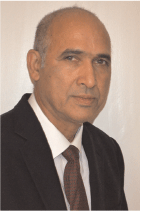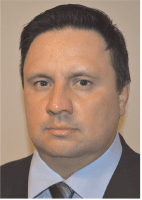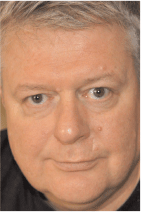Condition monitoring for the safe operation of offshore cranes
Julio De Melo A , Luis Rojas A and Daniel Shorten BA Upstream Production Solutions.
B Lloyds Register, Marine UK.
The APPEA Journal 56(2) 605-605 https://doi.org/10.1071/AJ15111
Published: 2016
Abstract
Offshore cranes work in harsher conditions than their onshore counterparts, with exposure to a highly corrosive environment and dynamic loading when conducting lifts from floating vessels. These degradation mechanisms can significantly reduce equipment life expectancy and increase maintenance/replacement costs without adequate mitigation programs in place. A systematic process must be followed to identify the potential for loss of integrity of components that could lead to failure, and strategies should be defined/implemented to ensure safe operation.
Study outcomes feed into the maintenance and sparing philosophy, and cascade to site personnel as maintenance and operating procedures. The implementation of a robust condition-monitoring program prior to degradation occurring is a key factor in the success of this program, examples of which include the following.
-
Slew bearing condition monitoring: in addition to regular visual inspection and recording of measurable readings, a well-structured grease sampling and analysis protocol provides early detection of moisture ingress, deterioration of lubrication and bearing failure.
-
Structural integrity: reporting on integrity by exception does not provide confidence that an area may have been left out, or consistency in ongoing reporting.
-
End of useful life definition: some components aren’t available for inspection; others can be inspected however they are susceptible to failures that are not practically detectable. These potential hidden failures can be prevented if a process is followed where the critical component’s operating life is defined, with appropriate supporting justification, and it is renewed accordingly regardless of visual appearance.
An effective condition-monitoring program allows the operator to ascertain if the strategies in place are effective, pick up early detection of potential failure, and arrest the degradation while still inside a safe operating envelope.

Julio De Melo, Maintenance Manager for Upstream Production Solutions, has more than 30 years’ experience in the oil and gas and marine industries. He started his career as an on board marine engineer, moving on to ship repair in marine dry docks, followed by a shore-based maintenance management role for a fleet of oil tankers. He then moved into the oil and gas industry, starting downstream in an oil refinery, before migrating to upstream in a maintenance management capacity. While working for Upstream Production Solutions for 10 years, Julio has successfully lead engineering, maintenance, and asset integrity programs for both offshore and onshore assets. |

Luis Rojas, Senior Asset Integrity and Maintenance Engineer for Upstream Production Solutions has more than 15 years’ experience in oil and gas production operations in Australia and overseas. He is experienced in the development of interdisciplinary maintenance and integrity projects to deliver asset integrity throughout the life of the asset. Luis is a mechanical engineer with a Master’s of Oil and Gas from the University of Western Australia. |

Daniel Shorten is practicing within the Marine Consultancy and Technical Directorate of Lloyd's Register in the UK. His principal activity is promoting best practice and the management of change, specifically in relation to asset management, machinery health maintenance, and condition based maintenance (PdM and CBM). Using intelligent processes and by working across disciplines to help align regulation, self-assessment, and classification processes, this involves advisory consultations, discussion, training and mentoring of aspiring engineers, direct assessment of case files, and liaison with the main business stakeholders internally and externally. |


